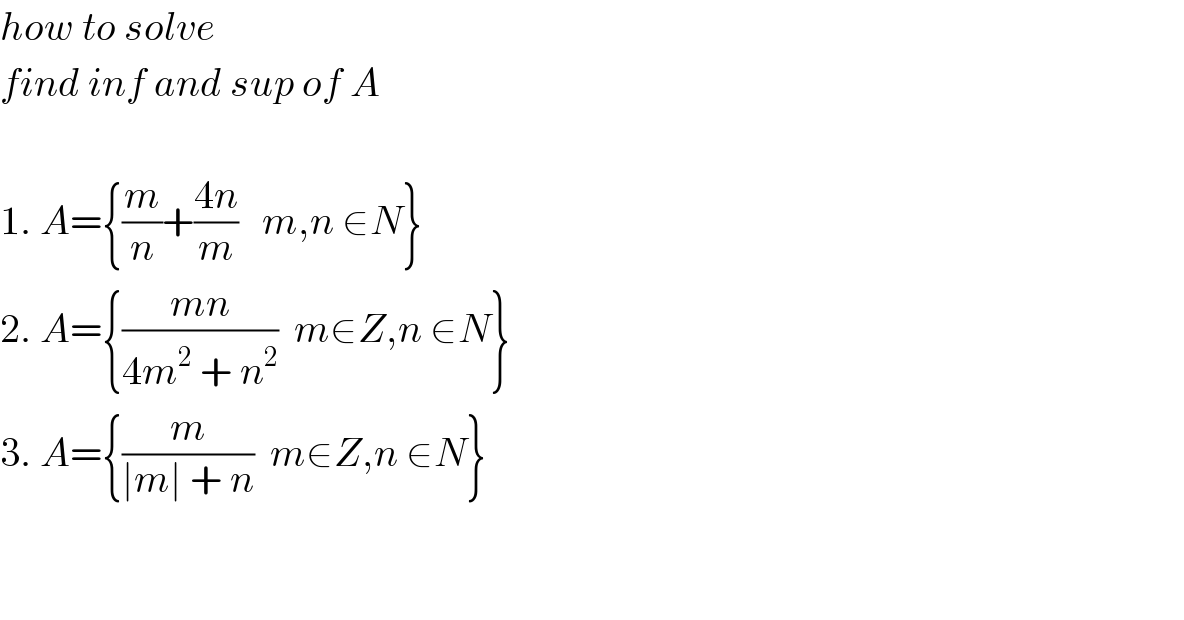
Question and Answers Forum
Question Number 78425 by arkanmath7@gmail.com last updated on 17/Jan/20

Answered by MJS last updated on 17/Jan/20
![(d/dm)[(m/n)+((4n)/m)]=(1/n)−((4n)/m^2 )=0 ⇒ m=±2n (d^2 /dm^2 )[(m/n)+((4n)/m)]=((8n)/m^3 )= { ((−(1/n^2 ); m=−2n)),(((1/n^2 ); m=+2n)) :} local max at m=−2n but m, n ∈N ⇒ ⇒ A_(max) =+∞ [m=1∧n→+∞ or n=1∧m→+∞ ⇒ A→+∞] local min at m=2n∧m, n ∈N ⇒ A_(min) =4](Q78431.png)
Commented by MJS last updated on 17/Jan/20

Commented by arkanmath7@gmail.com last updated on 17/Jan/20

Commented by arkanmath7@gmail.com last updated on 17/Jan/20

Answered by MJS last updated on 17/Jan/20
![(d/dm)[((mn)/(4m^2 +n^2 ))]=−((n(4m^2 −n^2 ))/((4m^2 +n^2 )^2 ))=0 ⇒ m=±(n/2) (d^2 /dm^2 )[((mn)/(4m^2 +n^2 ))]=((8mn(4m^2 −3n^2 ))/((4m^2 +n^2 )^3 ))= { (((1/n^2 ); m=−(n/2))),((−(1/n^2 ); m=(n/2))) :} min at m=−(n/2); A=−(1/4) max at m=(n/2); A=(1/4) try ((mn)/(4m^2 +n^2 ))<−(1/4) 4mn<−4m^2 −n^2 4m^2 +4mn+n^2 <0 (2m+n)^2 <0 false ((mn)/(4m^2 +n^2 ))>(1/4) leads to (2m−n)^2 <0 ⇒ false](Q78432.png)
Answered by MJS last updated on 17/Jan/20

